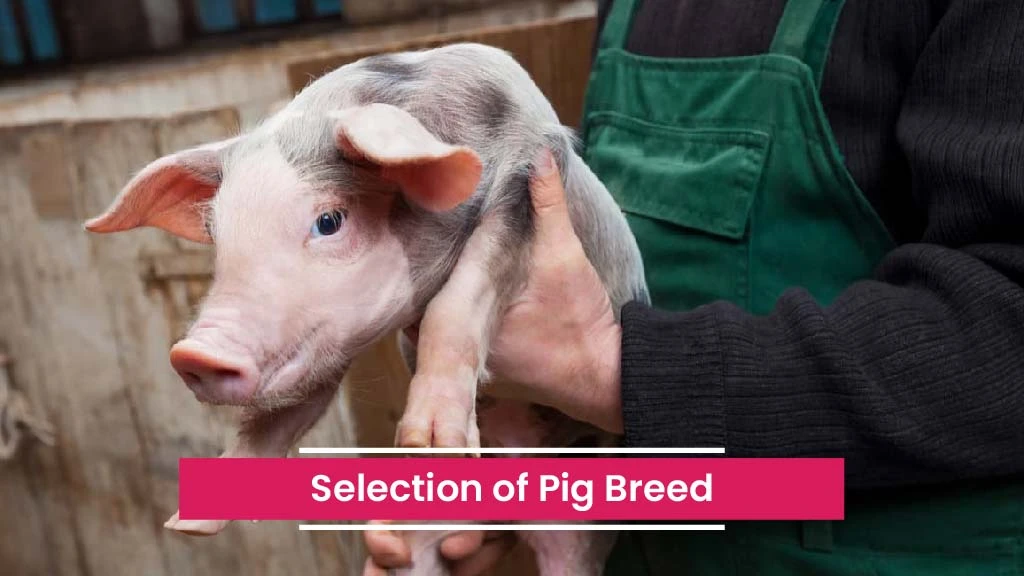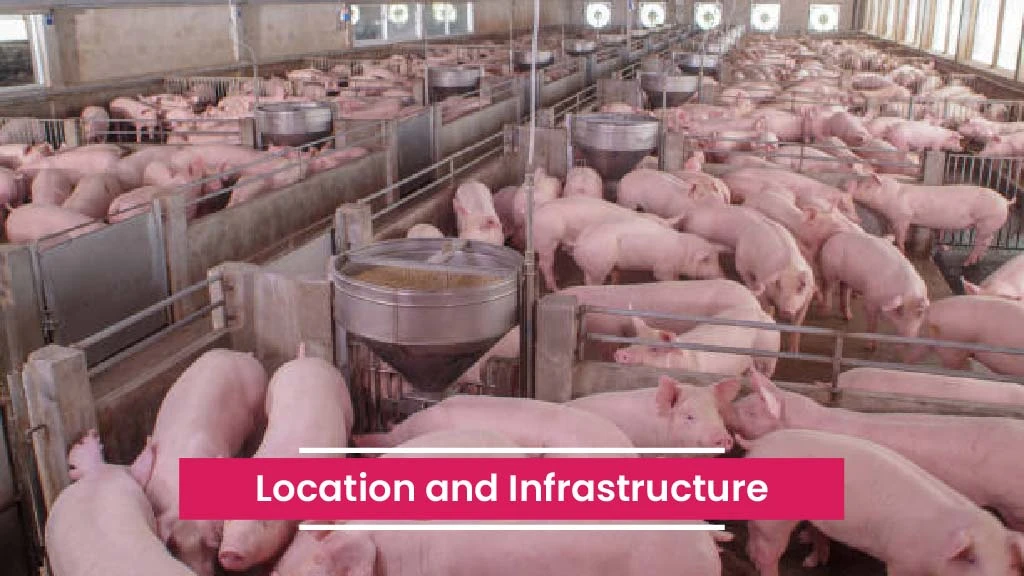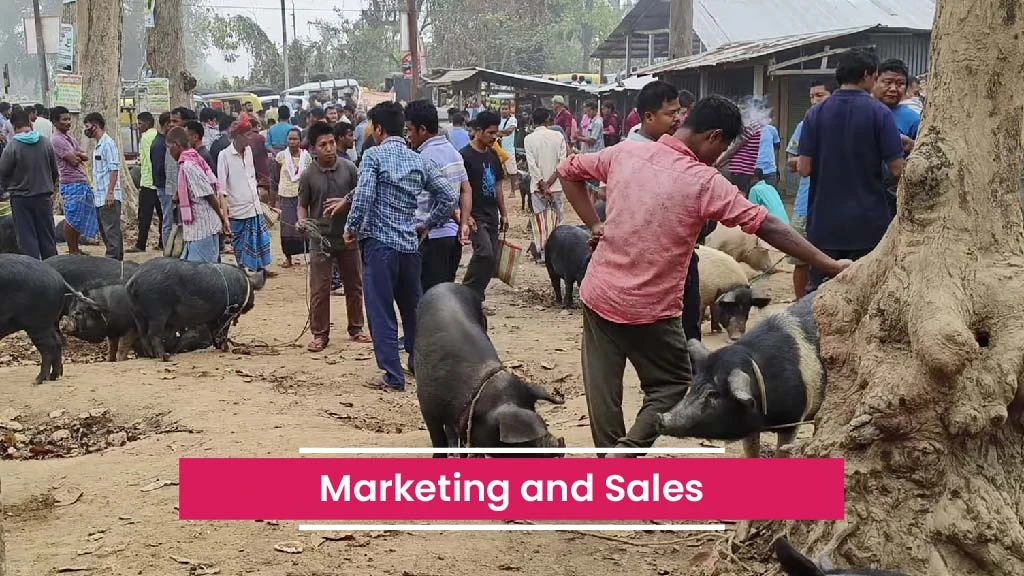How to do Profitable Pig Farming in India - A Comprehensive Guide

Table of Contents
- Introduction
- What is Pig Farming?
- Why Choose Pig Farming Business?
- Cost of Setting Up a Pig Farm
- Steps for Setting Up a Profitable Pig Farm
- Conclusion
Introduction
India's fast-growing population requires adequate food and nutritional security. Investment in livestock farming is the surest way to achieve these critical goals, and one of the most important businesses is pig farming.
The scope for pig farming in India is enormous. According to the 20th Livestock Census, the pig population in India is 9.06 million. Besides, pork production in India represents 7% of the important animal protein sources. The pig farming business in India is mainly concentrated in the North East states of Mizoram and Meghalaya. It primarily consists of the informal sector and backyard producers.
What is Pig Farming?
Pig farming deals with raising, rearing, feeding, and breeding pigs commercially for meat, bristles, and manure. Pigs are an important animal in the Livestock sector in India. They are the most potential source of meat and the most efficient feed converters after the broiler.
Why Choose Pig Farming Business?
There are certain advantages to choosing pig farming as a livestock business in India, which makes it one of the most profitable livestock businesses in the country. Some of the advantages are:
- Piggery is the most potent source of meat production. On average, the meat yield from pigs is 65 – 80% compared to other livestock.
- The feed conversion efficiency is the highest for the pigs among all livestock animals. That is, they gain more weight from a given feed.
- It ensures higher returns to farmers with less effort and investment. According to a Project Report on Pigs in Mizoram, the investment rate of return (IRR) is around 20%.
- Pigs grow faster than any other livestock animal, and it takes 6 – 8 months to get mature pigs for the market.
- Pig meat has low water content and high fat. It is rich in vitamins like thiamin, niacin, and riboflavin.
- Pig by-products like bacon, ham, lard, and pork sausages can help earn valuable foreign exchange.
- Pig fat also has a considerable demand in poultry feed, paints, soap and chemical industries. Even their manure is used as fertilisers in fishponds.
Cost of Setting Up a Pig Farm
The cost of setting up a pig farm depends on the nature of the breed you select for your piggery business and the capital subsidy given by the government. For instance, with a capital subsidy of 50% under the National Livestock Mission, the net capital cost of establishing a pig farm with 100 pigs comes in the range of INR 22 – 25 lakhs*.
Steps for Setting Up a Profitable Pig Farm
Certain steps are involved in setting up a profitable pig farm. Before establishing a pig farm, you need to prepare a pig farming business plan. This plan should include the cost of breed, infrastructure, and land, along with a detailed marketing plan and the process of obtaining a pig farming license in India.
Select the Type of Pig Farming

Pig Farming in India can be intensive, semi-intensive, or scavenging, depending on the type of pig, facilities, and personal choice.
An intensive pig farming system is expensive and applicable for large commercial farms. Productivity is high in this system due to the scientific approach and high-quality management.
Semi-intensive pig farming is generally undertaken in rural areas. It is a modified form of a scavenging system wherein pigs are kept in strong enclosures. It requires a large area for the free movement of pigs, and a scientific approach is lacking.
The scavenging pig farming system is the primitive method of pig rearing. In this system, pigs can roam free in the herd and feed on scavenging materials. Productivity is less due to the frequent occurrence of disease.
Selection of Pig Breed

The first step involves selecting pig breeds, which can be indigenous or cross-breed, like Hampshire and Saddleback. In general, crosses of Hampshire or Lor Large Black with indigenous breeds are popular among farmers.
Selecting the appropriate pig breeds is crucial for profitability. Choose breeds with good mothering ability, grain and feed efficiency, high litter size (number of piglets born), and strength and vigour of litter.
Some popular pig breeds in India include Hampshire cross-bred, Ghangaru, Landrace, Large White Yorkshire and Hampshire.
Location and Infrastructure

Select a location far from the residential area with less noise and pollution. Moreover, the location must have a sufficient water supply, clean air, and transportation.
Housing is necessary for the protection and proper growth of pigs. The shed must be constructed in a North-South direction on dry, raised ground. The roof should be 8 feet to 10 feet high.
Besides, the house's floor should be non-slippery, pucca, and sloped (not more than 3 cm slope).
In addition, make provision for feeding and water troughs, a creep box, and adequate open space for exercise. Besides, there should be adequate provision for sufficient water and facilities for disposing of feces.
Feeding and Nutrition

Feeding the pigs with nutritious feed is the most essential part of the piggery business. Feeds constitute 70-75% of the cost of raising healthy hogs.
Quality and quantity of feed determine the quality of carcasses, which, in turn, determines the profitability of the pig farming business.
The common pig feed ingredients are rice (broken and polished), maize, wheat bran, fish meal, ground nut cake, salt and mineral mixture. The feed should contain carbohydrates, protein, minerals, vitamins, and fats.
A pig needs lots of clean water, approximately 1.5 to 2 gallons daily over 6 months.
You can even use processed Colocasia (up to 30%), water hyacinth (up to 30%), or cabbage (up to 10%) as feed to minimise the cost of production.
Care and Health Management

Maintaining a high quality of health and farm hygiene is critical to ensure that pigs gain adequate weight, farmers get sufficient profit, and consumers get quality pork. Some of the health care management tips are:
- Prevent water logging in the area and wash the floor twice daily with disinfectant and potassium permanganate.
- Make a provision for a foot bath containing 2% potassium permanganate solution so that every person entering the farm should wash their feet.
- Timely replace and repair damaged floor, iron girll, and pipe to ensure that pig's hoof, hock joints, and knee are not injured.
- To prevent diseases caused by parasites, use insecticides in consultation with a veterinarian. Alternatively, tobacco extract mixed with an equal part of joogli can be applied externally for 5-6 days.
- Follow the recommended vaccination schedule for pigs to prevent microbial diseases like Swine Fever and Foot and Mouth Disease (FMD).
Marketing and Sales

Identify potential markets and customers for your pork products. Contact local markets, restaurants, hotels, and direct customers to establish sales channels.
To attract customers, focus on marketing strategies such as branding, product quality, and effective communication. You can showcase your products at local trade fairs and exhibitions.
Conclusion
The scope of pig farming in India is vast and holds considerable promise as a profitable agricultural activity. With the government's support in the form of capital subsidy and growing demand for pork, the farmers have the opportunity to generate substantial revenue. But to ensure success in the venture, you need to consider factors such as breed selection, proper health care management, good infrastructure, and market conditions.
Frequently Asked Questions On How to do Profitable Pig Farming in India - A Comprehensive Guide
1. How to start pig farming in India?
To start pig farming in India, you first need to select the type of pig farming and then select the right pig breeds. Besides, construct the right infrastructure and ensure proper health care management.
2. Is pig farming profitable in India?
Yes, pig farming is profitable in India with an internal rate of return (IRR) of around 20%.


Related Blogs












